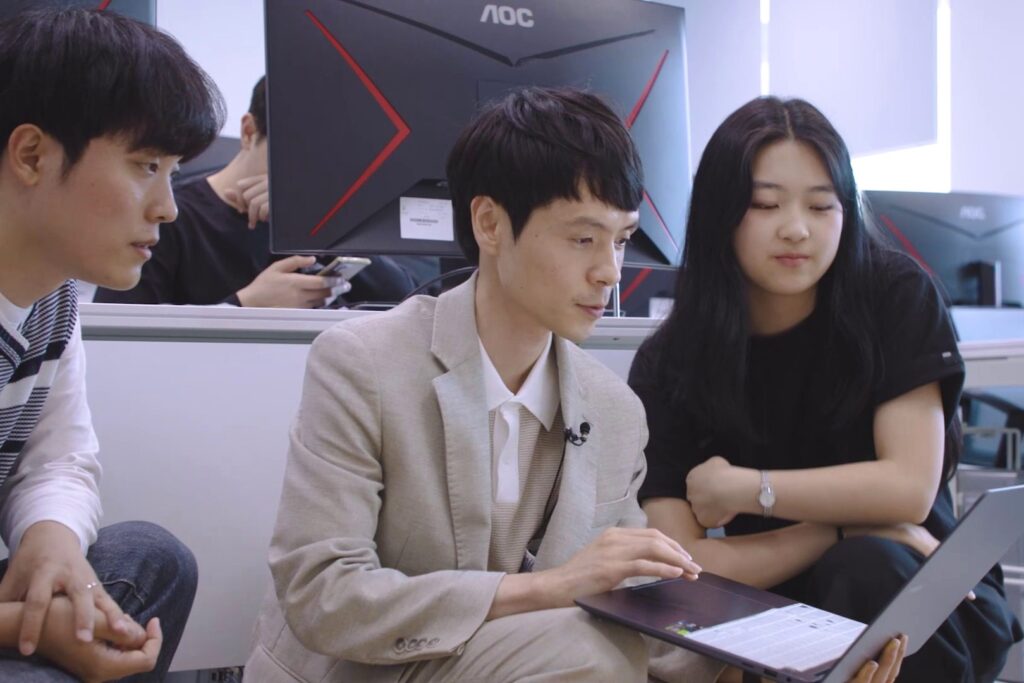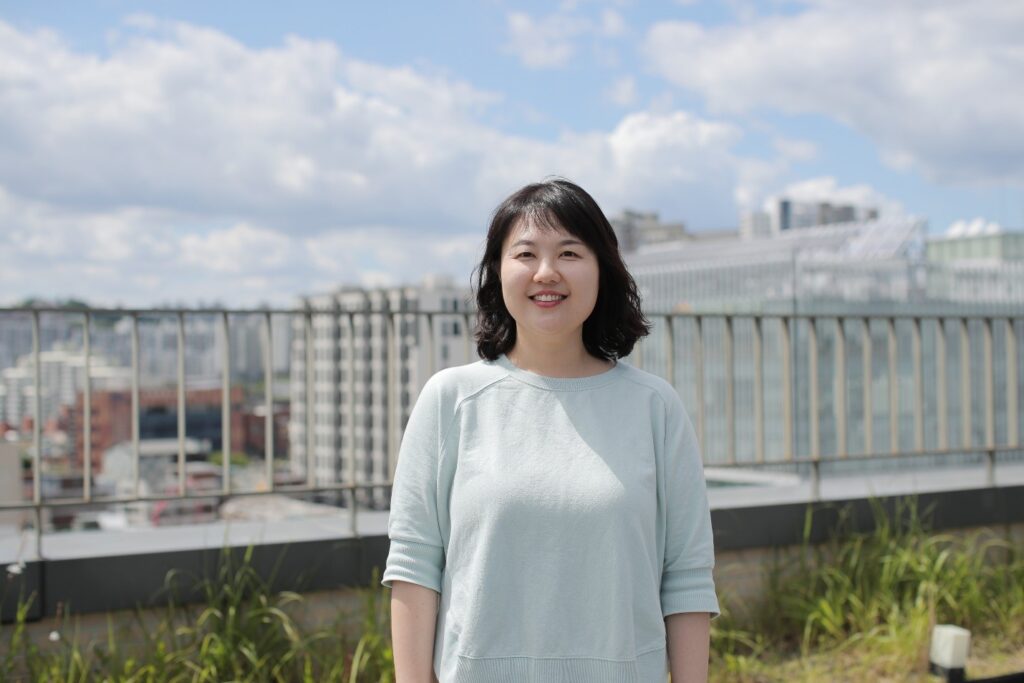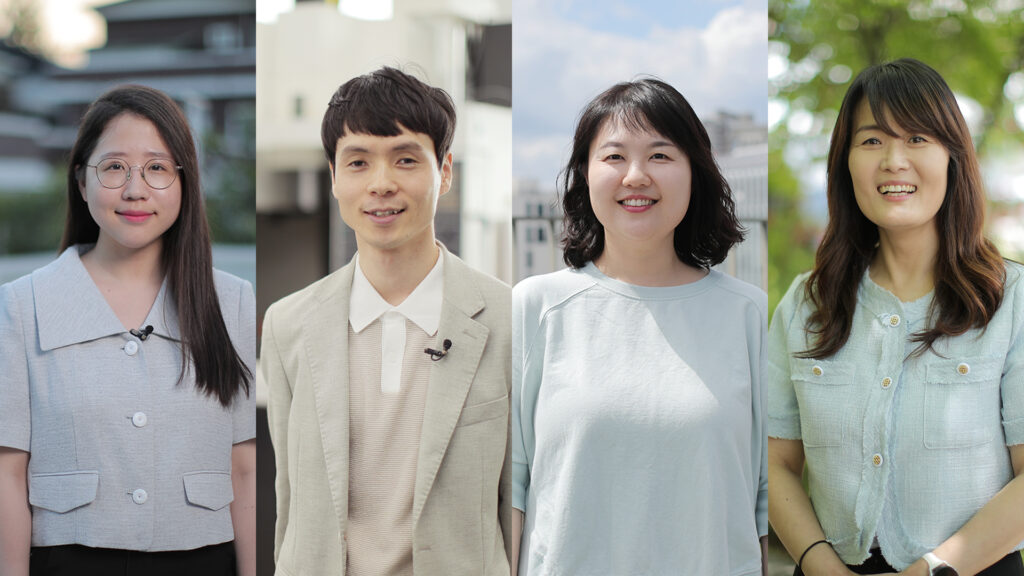In March, the Korean government released an intriguing survey showing that vulnerable groups—people with disabilities, low-income earners, rural residents, and those over 55—perceive AI’s impact more negatively than the general population. Among these groups, 20.2% felt that AI would adversely affect people and society, as compared with only 13.2% of all respondents. In addition, 24.6% of those in vulnerable groups believed AI would negatively affect them personally, as compared with only 15.1% overall. The most significant fear among vulnerable groups was unemployment—78.4% expressed concern that AI would reduce job opportunities.
Compounding these challenges, individuals in regions outside Seoul and the surrounding area face significant obstacles due to limited access to AI training. Disparities between urban and rural areas in Korea are widening the gap. An analysis of AI training courses offered in 2021 revealed that out of 62 AI courses, 49 (80%) were offered in the capital.[2] According to a 2024 report by the Busan Institute of Industrial Science and Innovation (BISTEP), from 2012 to 2022, the number of AI-related patents filed in Seoul and neighboring Gyeonggi Province totaled 1,044, accounting for 68% of the total, and nearly 60% of research papers were from these areas.
Marginalization is not only a regional issue. Concerns are emerging that the technology gap between for-profit companies and nonprofit organizations could continue to widen. Indeed, nonprofits are eager to adopt technology, but the main barrier is cost. Experts in the nonprofit sector note that even among those willing to undertake a digital transformation, only a handful can afford to do so.
To bridge this technological divide, Microsoft is actively promoting its AI Skills Initiative in Korea. This initiative extends AI learning opportunities to diverse regions and groups, without discrimination. The inclusion of practical AI training for educators and nonprofit organizations will amplify the initiative’s impact and empower changemakers across the country.

Hyeonju Lee volunteers weekly as part of Digital Empowerment project at the nonprofit social venture JUMP, providing AI training to children. Amid her bustling work life, she still manages to find time to engage with young people, a role that resonates with her own childhood experiences.
“I actually benefited from volunteer tutoring myself,” Lee recalled. “From the ages of 12 to 17 I used to attend the local children’s center, where I had the opportunity to play with friends and learn from college students who volunteered as mentors. I started doing this because I wanted to have a positive impact on young people’s lives, just as I had experienced as a mentee.”
To spark an interest in AI among her young mentees, Lee proposed creating characters with AI as a fun and engaging way to encourage them to experiment with the technology. She uses chat-based programs like Bing and Copilot to help her mentees express their ideas more easily. She teaches the children how to design characters step by step, explaining how to enter the right prompts to get the desired results.
Lee wants to ensure that young people do not feel left behind in a rapidly changing, technology-driven world.
“As technology evolves, we want to make sure that children don’t think, ‘I can’t keep up with that’ or ‘I am an outsider in this system,’ but instead recognize that the world is changing and feel confident that they can adapt to those changes without getting lost,” Lee explained. “I hope they’ll come to realize, ‘I’m a person who is capable of better things,’ and feel motivated to explore a wider range of fields and interests.”

Taesu Yim, a professor of Mechanical Systems at Korea Polytechnic Cheongju campus in North Chungcheong Province, which is a two-hour drive from Seoul, also wanted to provide his students with an opportunity to engage with AI.
As a vocational school, Korea Polytechnics(KOPO) offers two-year programs in practical majors related to the manufacturing industry. Its graduates often choose to work for manufacturers close to their hometowns. While the trend among young Koreans from rural areas is to move to Seoul and other major cities, many of Yim’s students choose a different path.
“Manufacturing companies, which are crucial for local industries, currently have limited access to AI technology and are not actively adopting it in their operations,” said Yim. “However, when AI technology becomes more widely available in the future, our students will be able to lead small businesses in adopting and utilizing it.”
Yim teaches a course called Autonomous Driving Control Practice With AI, which offers students hands-on experience with AI technology. Previously, students struggled to program their own Python scripts for self-driving vehicles and had to rely on Yim’s programs. After completing AI for Polytechnics, the Microsoft-supported AI training program for professors, Yim realized that his students could use Azure Custom Vision to develop their own autonomous driving programs.
“During our classes, simple theories about classification models and Azure Custom Vision training helped students understand AI concepts more easily and develop their own autonomous driving algorithms,” he said. “As a result, they were able to gather and train their own autonomous driving data, successfully carry out actual autonomous driving, and demonstrate improved understanding of AI.”
Yim has shared his insights with other professors in his department, encouraging them to incorporate Power BI into their big data visualization courses, yielding promising results.
“I want our students to use AI to improve their work efficiency and advance their careers,” Yim said.

Boim Jang is the chief operating officer of Gonggamin, a mental health organization that helps people by providing an empathetic listener.
“Nonprofit organizations are often understaffed and can’t afford to get bogged down in time-consuming tasks,” she said. “I believe AI can help us get things done faster, freeing up time for nonprofit employees to focus on more creative tasks.”
To date, nearly 8,000 mental health programs have engaged over 20,000 participants. After each program, they manually analyzed participant surveys, assessing responses based on sentence length, frequency of positive or negative words, and the use of emotive words.
“Not only is it time consuming to engage in these repetitive simple tasks,” Jang added. “The greater challenge is that it diminishes motivation and concentration.”
Wondering if AI could help solve the problem, she joined AI for Changemakers through Root Impact, a nonprofit that partnered with Microsoft Korea to offer AI training to under-resourced community organizations like Gonggamin.
Jang now advises colleagues at other nonprofits to consider adopting AI. She knows from experience that nonprofits are often short on time, and that investing energy in AI training can be burdensome. However, she believes the benefits far outweigh the initial investment.
“I encourage organizations to explore and experiment with AI,” Jang said. “Although there may be some hesitation when adopting new technologies or programs, investing the time will allow us to work more efficiently in the near future and gain a lot more time to work on the tasks we care about most.”

The training room at the headquarters of Korea Food for the Hungry International(KFHI), one of the largest relief and development nonprofits in the country, is bustling with activists from various nonprofits. Jeong-eun Oh, the head of the donor support department, can often be found in the training room with her colleagues. Here, she suggests new ideas on how to use AI to advance their mission, such as creating campaign proposals or promotional posters with AI prompts and Copilot.
Oh spearheaded the adoption of AI for Nonprofits, the Microsoft-supported training program that helps participants understand and use generative AI effectively. Finding the program highly beneficial, she led its implementation for all 250 employees at KFHI, making it mandatory to enhance their work with AI.
“Some employees who were interested had attended some training on using Copilot or ChatGPT before, but AI for Nonprofits took the AI theme further,” said Oh.
As the person responsible for the organization’s IT and donor relations, Oh is at the forefront of incorporating AI into their operation, beginning with her department.
“In managing donor relations, I’ve used AI to analyze a wide range of donor data, create detailed donor personas, and target fundraising efforts more precisely. For IT tasks, AI has accelerated our processes by guiding data extraction queries and providing code for program development.”
Oh understands the transformative power of AI. As a department head who manages 26 team members, she employs AI technology to overcome the limitations of human memory and enhance her ability to lead and coach her team effectively. This is further highlighted by her IT team’s initiative to develop an internal help desk aimed at reducing repetitive tasks after taking the AI skilling course.
“We aspire to set a good example,” she said. “We’d like to inspire smaller nonprofit organizations and those that are just starting out.”

